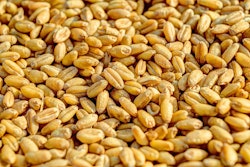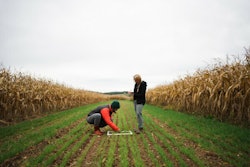
North Dakota State University’s (NDSU) Dr. William W. Wilson, CHS Chair in Risk Management and Trading, University Distinguished Professor, Department of Agribusiness and Applied Economics, said US grain merchants should prepare for market volatility in 2023 due to Russia’s invasion of Ukraine.
International trade is a cornerstone of US agriculture, but today’s global grain markets are anything but stable, according to Wilson’s closing general session address at National Grain and Feed Association’s (NFGA) 2022 Country Elevator Conference.
More than 550 industry members gathered at the St. Louis Union Station in St. Louis, Missouri, December 6-8 for NGFA’s 51st Country Elevator Conference and Trade Show, designed for grain merchants, elevator operators, feed manufacturers, processors, and grain industry suppliers.
Alternative shipping routes raise commodity prices
Fears over world grain supplies have persisted since Black Sea exports were dramatically cut earlier this year. As a result, commodity prices soared to the highest level since 2008.
Part of the reason commodity prices rose so sharply is transportation rates are much higher for alternative grain shipping routes out of Ukraine. Rail routes that traditionally went to Odessa shifted away to rail or truck through Romania, Poland and Moldova.
Wilson said shipping to alternative destinations like Constanza, Romania; Gdansk, Poland; Hamburg, Germany or Reni on the Danube (for barges/small ships) incur additional costs estimated between $75 and $125/metric tonne.
“Unblocking exports by sea will significantly strengthen the stability of the economy and alleviate the acuteness of the food crisis, but only under the condition of stable export of 6 million tonnes of grain per month at least until March 2023,” Wilson said.
Wilson conducts research in areas related to grain marketing, impacts of biotechnology, and logistics and supply chain systems. He provides key information to grain crop industries in North Dakota about market shifts, technologies that impact production, and supply and demand impacts on exports.
He works closely with plant breeders and private industry to help develop public and private partnerships in technology, including those provided through biotechnology discoveries, and provides research based information on the impacts of these technologies to North Dakota’s grain industry.


















